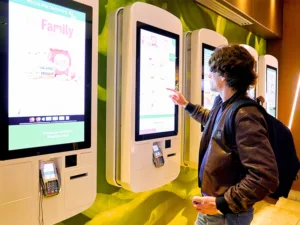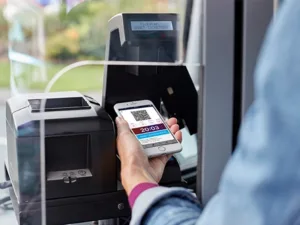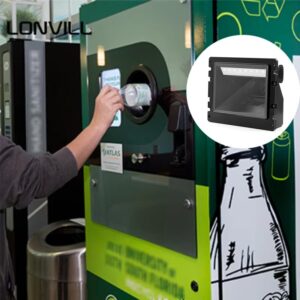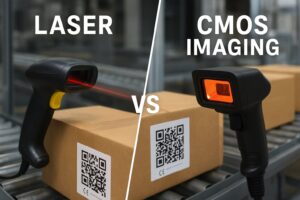The Transformation of Checkout Systems
Retail checkout systems have undergone dramatic changes. From simple barcode readers to intelligent vision scanners, every stage has pushed automation forward. As customer demand grows, so does the need for faster, smarter, and more reliable automated checkout scanner systems.
This article explores the full journey, from 1D barcode scanning to today’s AI-powered vision modules. It will also analyze technical trends, challenges, and how Lonvill’s scanning modules empower future-ready retail systems.
1. The Era of 1D Barcode Scanning
The retail automation journey began with 1D barcode readers. These devices, introduced in the 1970s, used laser scanning to read horizontal lines printed on packaging.
Although simple, 1D barcodes laid the groundwork for structured product data. Retailers embraced them quickly due to their cost-effectiveness.
However, 1D systems came with limitations:
-
Low data capacity
-
Rigid alignment requirements
-
Limited error correction
Despite these constraints, 1D barcode scanners remained dominant for decades.
2. Advancing to 2D Code Scanning
Retailers eventually faced growing data needs. Promotions, expiry dates, and traceability required more than basic line codes. This led to the rise of 2D barcodes, including QR codes and Data Matrix codes.
2D codes store more data in compact areas. They also tolerate damaged surfaces better. Unlike 1D, 2D scanners use image sensors to capture the entire code area.
This shift improved:
-
Data security
-
Scanning speed
-
Code density handling
Transitioning from laser-based to image-based scanning opened new doors for automated checkout scanner systems.
3. The Age of Embedded Scan Modules
As retail moved toward self-service, scanning modules needed to be more compact and integrated. Embedded scanning modules became essential.
These modules fit into kiosks, vending machines, and self-checkout terminals. Designed for OEMs, they offer:
-
Compact design
-
Modular integration
-
Fast decoding algorithms
Lonvill’s embedded scanning modules combine industrial-grade optics with advanced decoding chips. Our designs emphasize low power consumption and high stability under continuous operation.
This supports retail environments that run 24/7, such as supermarkets and convenience chains.
4. Rise of AI and Computer Vision
In recent years, image recognition has transformed checkout technologies. Traditional barcode reading is now complemented—or replaced—by AI vision systems.
These systems use deep learning to recognize product shapes, labels, and even prices directly from camera input. For example:
-
Fruit and vegetable identification
-
Unpackaged goods detection
-
Label-free item classification
Computer vision offers significant advantages:
-
No barcode dependency
-
Real-time processing
-
Integration with weight sensors
Vision-based automated checkout scanner systems reduce manual input and improve transaction accuracy.
5. The Hybrid Approach: Barcode + Vision
Barcode scanners are still essential, but combining them with AI brings better accuracy. Most retailers now adopt hybrid solutions.
These systems use barcode scanning for packaged goods and vision for fresh produce or untagged items.
This dual approach:
-
Reduces checkout friction
-
Improves self-service accuracy
-
Handles non-standard items
Lonvill’s hybrid modules combine barcode decoders with HD camera input and edge AI processors. This enables scalable, plug-and-play retail deployment.
6. Integration with POS and IoT Systems
Modern checkout scanners must integrate with a broader ecosystem. They are now key components in connected IoT retail environments.
Scanners link with:
-
Point-of-sale (POS) terminals
-
Inventory management platforms
-
CRM databases
Real-time data sync helps optimize:
-
Stock replenishment
-
Customer loyalty programs
-
Purchase analytics
Lonvill scanning modules feature industry-standard protocols like USB, UART, and RS232. They also support SDKs for Windows, Linux, and Android systems, ensuring seamless integration.
7. Technical Highlights: What Makes a Superior Scanner Module?
Today’s scanning module must go beyond decoding. Retail demands reliability and versatility. Key technical features include:
-
High Frame Rate Sensors
Enables fast-moving object detection. -
Wide-Angle Optics
Supports scanning from flexible distances and angles. -
Ambient Light Tolerance
Allows usage under strong lighting or reflections. -
Anti-glare and Anti-scratch Windows
Protects the sensor from long-term use. -
Multi-code Decoding
Reads 1D and 2D codes simultaneously. -
Offline Recognition
Works even without network connectivity.
Lonvill optimizes each of these features in our retail modules to meet high-traffic usage expectations.
8. Challenges in Deployment
Despite the progress, deploying modern scanners involves challenges:
-
Environmental factors: Vibration, dust, and temperature affect performance.
-
User behavior: Customers may hold items too fast or misalign them.
-
Diverse product surfaces: Glossy, curved, or wrinkled items confuse basic scanners.
Lonvill mitigates these issues through:
-
Anti-interference shielding
-
Intelligent focusing
-
AI-based auto-calibration
We provide thorough API support and documentation to help system integrators deploy reliably.
Conclusion: From Simplicity to Intelligence
Checkout technology has moved from simple barcodes to intelligent vision. Each evolution stage reflects the retail sector’s rising demand for speed, accuracy, and automation.
Barcode scanning laid the foundation. Embedded modules advanced the integration. Vision and AI now redefine what’s possible.
As checkout continues evolving, automated checkout scanner systems will remain at the center of retail innovation. Lonvill is proud to be part of this transformation, designing smarter modules for a faster retail future.









Leave a reply